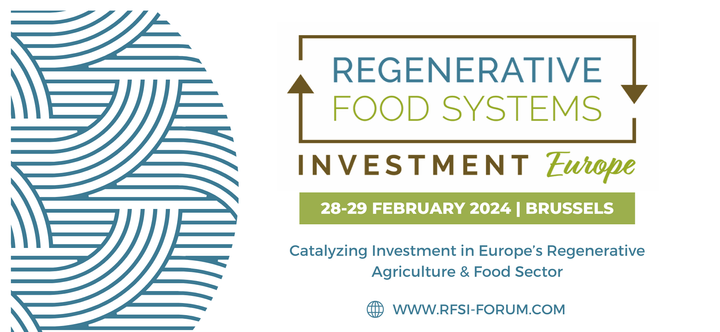Regenerative Agriculture Metric Series — Part 2: Atmospheric Carbon Reduction
This blueprint outlines a set of key performance indicators (KPIs) identified by a working group of regenerative agriculture experts and practitioners, led by Proof and Trailhead Capital. The blueprint is designed to help regenerative agriculture investors and businesses select industry-specific metric sets and promote harmonization for impact measurement. It’s intended to be broadly applicable to investors and businesses who invest in or operate directly managed land, as well as those who invest in or provide upstream and downstream services in agricultural supply chains.
This blueprint covers the second of six impact categories to be addressed by the working group:
- Expand the amount of regeneratively managed land
- Reduce atmospheric carbon ⬅
- Reduce food waste
- Conserve water
- Improve food nutrition and nutrient density
- Increase biodiversity
Impact Category #2: Reduce Atmospheric Carbon
Outcome KPIs
- Total Greenhouse Gas (GHG) Emissions
- Sum of Scope 1-3 direct and indirect GHG emissions. This KPI is composed of three base metrics. The definitions for the three base metrics come from the Greenhouse Gas Protocol.
- Scope 1 Emissions
- Scope 1 refers to direct GHG emissions from sources that are owned or controlled by the company, for example, emissions from combustion in owned or controlled boilers, furnaces, vehicles, etc., or emissions from chemical production in owned or controlled process equipment.
- Scope 2 Emissions
- Scope 2 refers to GHG emissions from the generation of purchased electricity consumed by the company. Purchased electricity is defined as electricity that is purchased or otherwise brought into the organizational boundary of the company.
- Scope 3 Emissions
- Scope 3 refers to GHGs emissions that are a consequence of the activities of the company, but occur from sources not owned or controlled by the company. Some examples of scope 3 activities are extraction and production of purchased materials; transportation of purchased fuels; and use of sold products and services.
- GHG Emissions Avoided (Scope 4 Emissions)
- Emissions avoided or reduced as a result of changes to the organization’s operations (e.g., changing an event hosted by the organization from in-person to virtual to reduce attendees’ travel emissions), or use of the organization’s products or services (e.g., clients consuming less energy due to their using a new version of your product compared to the status quo alternative), that are not already captured in Scope 3 emissions.
- GHG Emissions Sequestered
- Emissions sequestered from capturing and storing atmospheric carbon dioxide (e.g., through cover cropping, reduced tillage, and agroforestry).
- GHG Emissions Offset
- Total emissions offset through the purchase of carbon credits.
Additional Guidance
- For each of the KPIs above (excluding GHG emissions offset):
- Organizations should specify the tools, methodologies, or protocols used to calculate their emissions. For emissions sequestered or avoided through nature-based solutions (e.g., improved land management practices, avoided conversion, or land use change), organizations should refer to and, where possible, use generally accepted carbon measurement, reporting, and verification protocols. Examples might include protocols or methodologies published by the American Carbon Registry, Climate Action Reserve, and Verra.
- Organizations should indicate if the emissions calculations and resulting outputs have been independently verified by a third party auditor. Organizations should provide the name of the verifier and supporting documentation.
- Organizations should also calculate the emissions intensity using the following units (as applicable):
- Metric tons per one million in revenue
- Metric tons per kilogram of product
- Metric tons per hectare
- The scope of these KPIs includes land or facilities directly controlled by the organization (i.e., land for which the organization controls land use through direct operation or management) and land or facilities indirectly controlled, supported, or influenced by the organization (e.g., purchase contracts, sourcing from farmer cooperatives, and providing products or services to farmers that cultivate and manage land).
- As applicable, organizations should separate data and results for directly controlled versus indirectly controlled, supported, or influenced land or facilities.
- Organizations may also choose to report their net balance of GHG emissions (e.g., total Scope 1-3 GHG emissions minus GHG emissions sequestered and/or avoided).
- There are many tools and resources available to assist organizations to calculate their GHG emissions footprint. Tools used by some working group members include:
- USDA’s COMET-planner estimator: http://comet-planner.com/
- USDA’s COMET-farm calculator: https://comet-farm.com/
- AgLEDx’s Cool Farm tool: https://agledx.ccafs.cgiar.org/estimating-emissions/agriculture-ghg-calculators/cool-farm-tool/
- Normative’s expense-based estimation calculator: https://businesscarboncalculator.normative.io/en/
- CoolClimate Network’s business emissions calculator: https://coolclimate.berkeley.edu/business-calculator
Note that Organic Soil Carbon is included in the KPI blueprint for the first impact category on expanding the amount of regeneratively managed land. For this reason, it is not included in the KPI blueprint for the second impact category.
Interested in learning more about the Regenerative Agriculture working group? Email us at community@proof.io!
Interested in joining Proof’s Regenerative Agriculture community to gain access to resources, training, and community discussions? Join the Proof Sustainability Community now!
About Trailhead Capital

Trailhead Capital is a mission-driven investment firm seeking to create outstanding financial, societal, and ecological returns by backing entrepreneurs who are building the regenerative future of food and agriculture.
